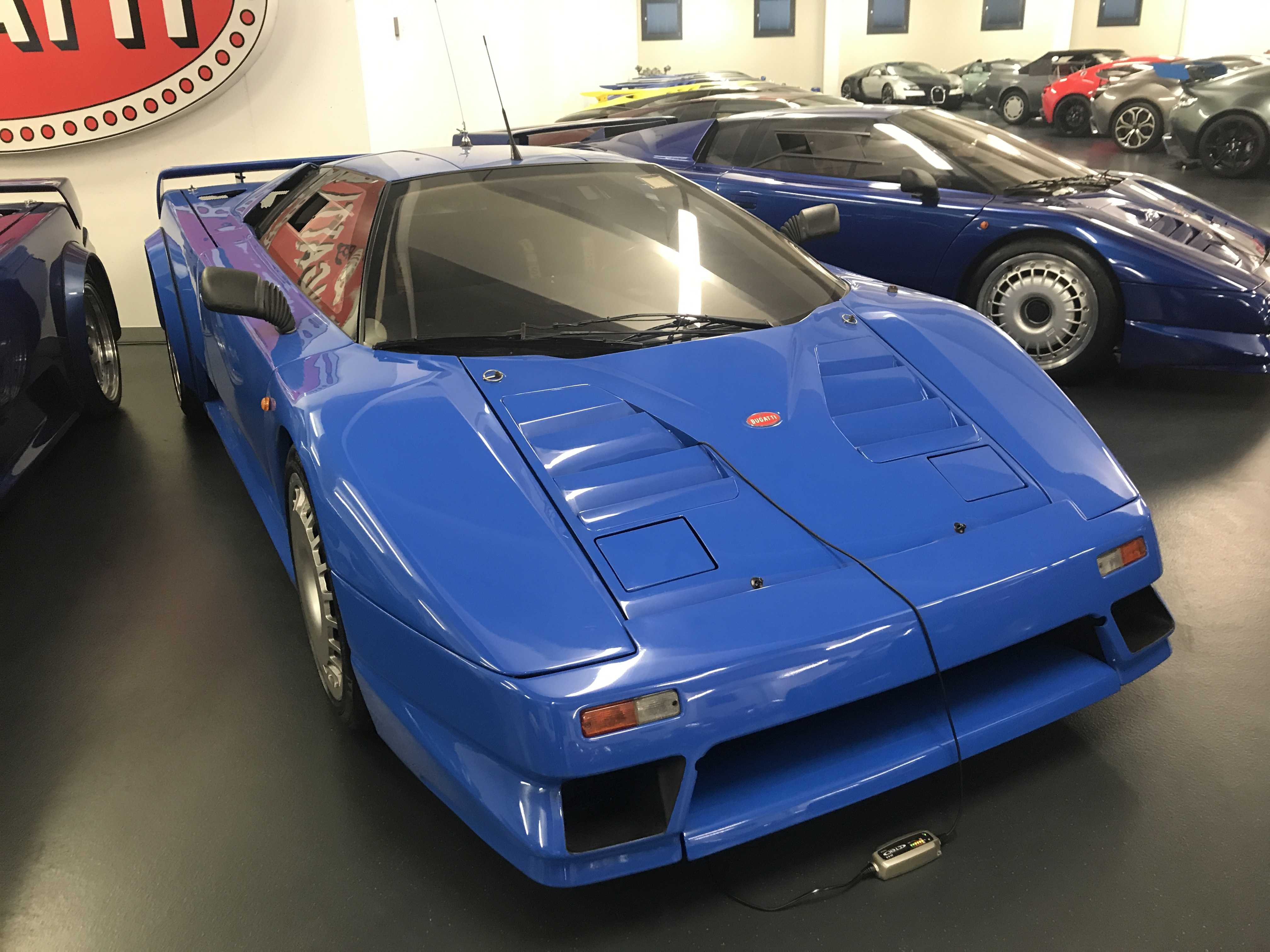1990 Bugatti EB-110 Prototype

The descriptions of the Classic Cars in the Directory were partly generated or supplemented with the help of artificial intelligence (AI). The content may occasionally not always be entirely accurate or factually correct despite careful checking.
The Bugatti EB-110 Prototype of 1990 is a masterpiece of engineering and design. It is the result of the collaboration between the legendary car designer, Marcello Gandini, and the brilliant engineers at Bugatti. It is a mid-engined, all-wheel-drive supercar that was ahead of its time in terms of technology and performance.
The EB-110 Prototype is powered by a quad-turbocharged 3.5-liter V12 engine that produces an impressive 553 horsepower at 8,000 rpm, and 450 lb-ft of torque at 4,200 rpm. The engine is equipped with a six-speed manual transmission that was developed in-house by Bugatti. The all-wheel-drive system distributes the power to all four wheels, providing excellent traction and stability, even at high speeds.
The chassis of the EB-110 Prototype is made of carbon fiber and aluminum, which provides high rigidity and low weight. The suspension system is independent with double wishbones, coil springs, and adjustable dampers that offer a perfect balance between comfort and performance. The brakes are from Brembo and are equipped with four ventilated rotors and eight-piston calipers, which offer exceptional stopping power, even at high speeds.
The exterior of the EB-110 Prototype is a work of art, with its sharp lines and aerodynamic curves that blend perfectly. The body is made of carbon fiber, which reduces weight, and the doors are of the iconic scissor type. The front of the car features a massive grille, which is flanked by two large round headlights. The rear of the car is dominated by a large rear wing, which improves downforce and stability at high speeds.
The interior of the EB-110 Prototype is a luxurious and comfortable space, despite the car's racing pedigree. The dashboard is asymmetrical, with the driver-focused instrument panel, while the passenger side features an airbag. The seats are upholstered in high-quality leather, and the steering wheel is a sporty three-spoke design. The car also features air-conditioning, power windows, and a premium audio system.
In conclusion, the Bugatti EB-110 Prototype of 1990 is a masterpiece of engineering and design, with its quad-turbocharged V12 engine, all-wheel-drive system, carbon fiber chassis, and luxurious interior. It set new standards for supercars in the '90s and remains a highly sought-after collector's item today. The EB-110 Prototype is a true testament to the genius of Bugatti and the skill of its engineers and designers.
Milestones
- Development of the EB-110 prototype begins in 1988 under the direction of Romano Artioli. - The car is officially unveiled in Paris in 1991. - The EB-110 is powered by a quad-turbocharged 3.5-liter V12 engine producing 553 horsepower. - The car features a carbon fiber monocoque chassis, which was a technological feat at the time. - The EB-110 is capable of accelerating from 0-60 mph in 3.3 seconds and reaching a top speed of 213 mph. - Initial production is set to be limited to 350 units, with a price tag of $350,000 each. - The Bugatti factory, located in Campogalliano, Italy, is completed in 1992 to house production of the EB-110. - The car receives critical acclaim, winning several awards including "Supercar of the Year" from the British magazine Top Gear in 1992. - Despite its success, financial difficulties lead to the demise of Bugatti in 1995, with only 139 EB-110s produced before the company's bankruptcy.Technical
- The Bugatti EB-110 Prototype 1990 was a mid-engine supercar designed and built by Bugatti Automobili S.p.A. - It featured a sleek and aerodynamic body made of carbon fiber and Kevlar, with a distinctive clamshell hood and butterfly doors. - Power was provided by a quad-turbocharged 3.5-liter V12 engine producing 553 horsepower and 451 lb-ft of torque. - The engine was mated to a six-speed manual transmission and a full-time all-wheel drive system, allowing for a 0-60 mph time of 3.2 seconds and a top speed of 213 mph. - The suspension system was fully adjustable, with double wishbone front and rear suspension and electronically controlled dampers. - The brakes were provided by Brembo, with ventilated discs and four-piston calipers at all four corners. - The interior featured leather and suede upholstery, a digital instrument cluster, and a premium sound system. - Only three prototypes were produced before the debut of the production EB-110 in 1991.CLASSIC CAR MATCHER
